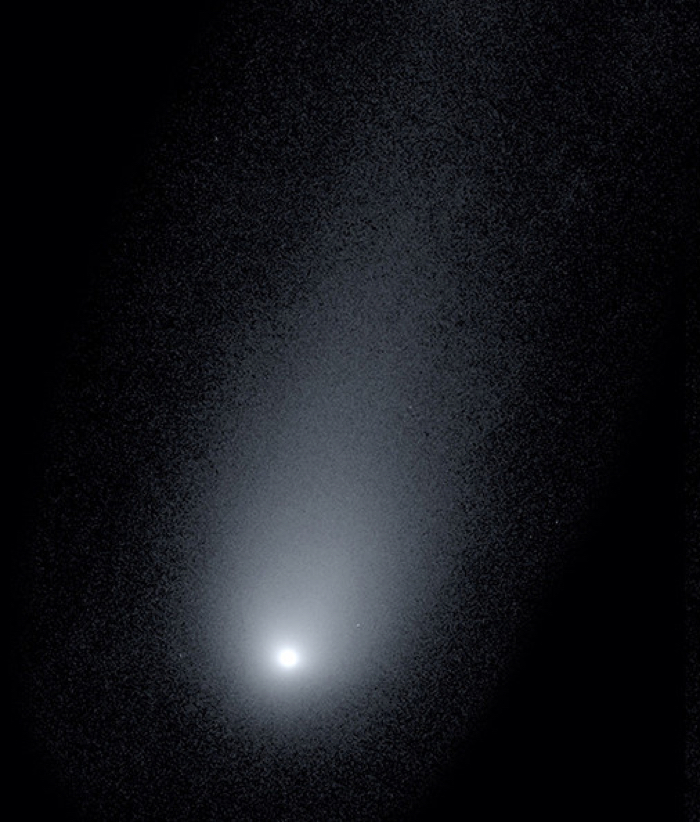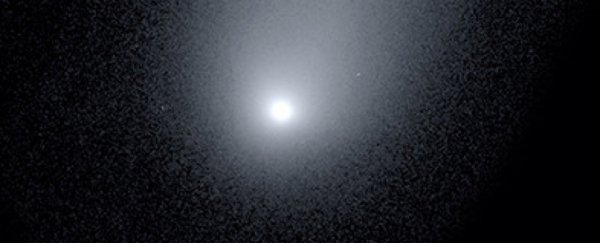We spotted it in August: a mysterious object shooting through our Solar System on a strange, hyperbolic trajectory implying that, whatever this thing was, it wasn't from around here.
Subsequent analysis confirmed this visitor from deep space, now designated 2I/Borisov, was only the second interstellar object ever detected in our Solar System (and the first comet). And we just got a brand-new close-up of it.
A team of astronomers from Yale University captured this stunning image of 2I/Borisov on Sunday, using the W.M. Keck Observatory's Low-Resolution Imaging Spectrometer in Hawaii.
 2I/Borisov. (Pieter van Dokkum, Cheng-Han Hsieh, Shany Danieli, Gregory Laughlin)
2I/Borisov. (Pieter van Dokkum, Cheng-Han Hsieh, Shany Danieli, Gregory Laughlin)
That white ghostly shroud surrounding the icy comet – which is currently drawing nearer to Earth – is called a coma: a cloud of gas and dust that drift into space as the object's icy nucleus sublimates in the heat of starlight.
In the case of 2I/Borisov, much of this outgassed matter trails behind the comet in an epic tail that currently measures almost 100,000 miles long – over a dozen Earth diameters in a row.
"It's humbling to realise how small Earth is next to this visitor from another solar system," says one of the Yale team, Pieter van Dokkum.
2I/Borisov is projected to reach its closest approach to the Sun in early December, and to Earth later in the month – after which it will continue on its way out of our cosmic neighbourhood, taking what remains of its icy mystery with it to whichever distant stars beckon next.
